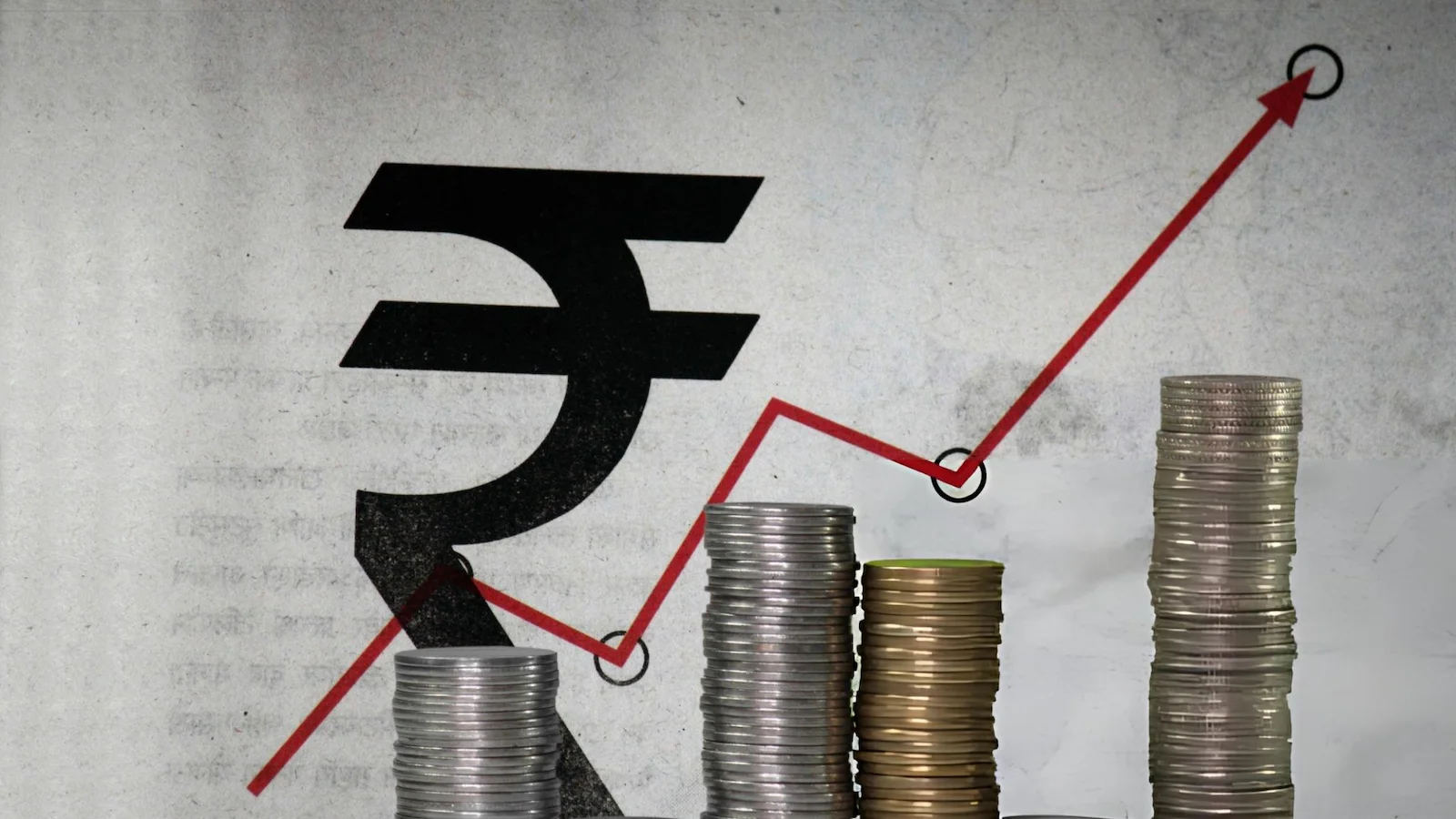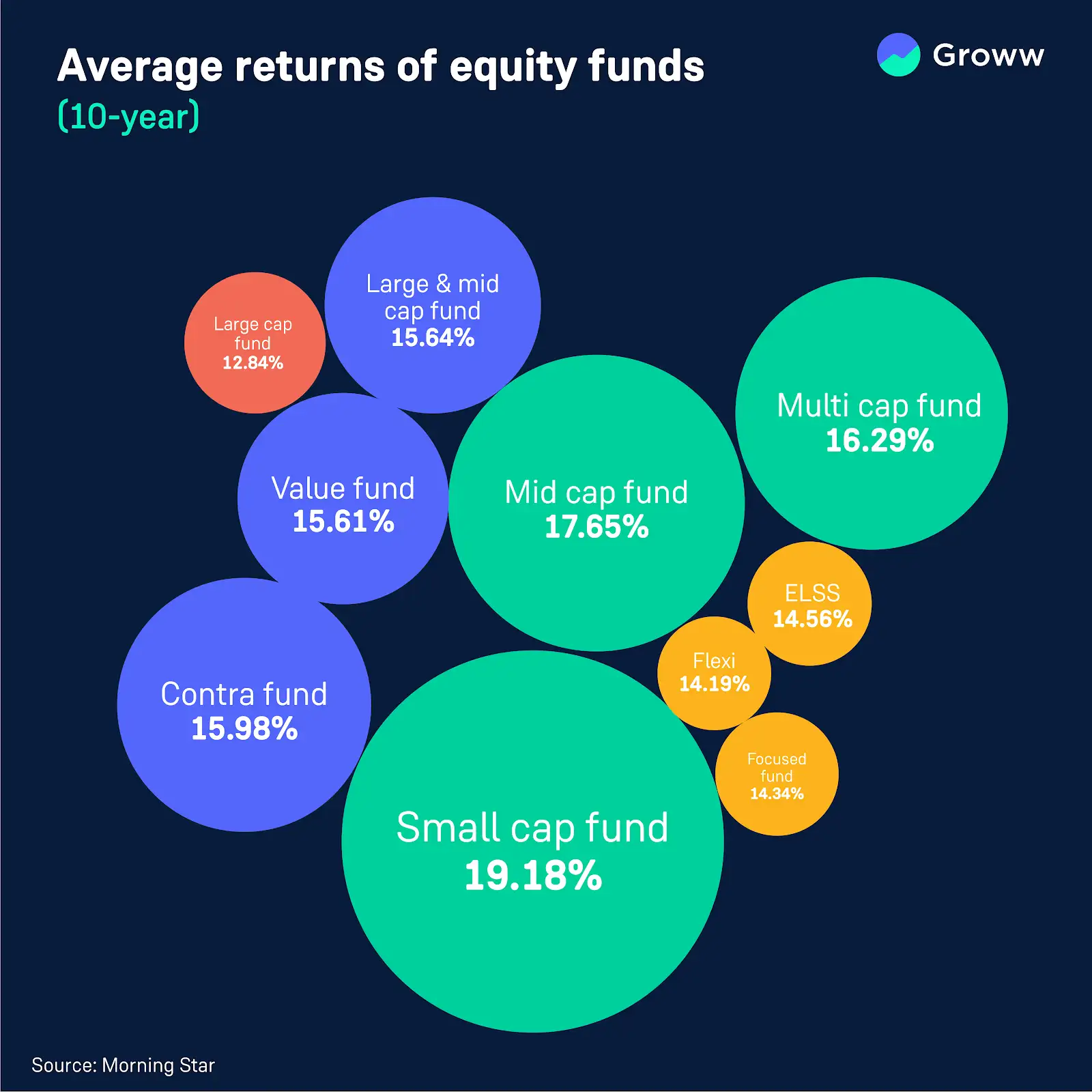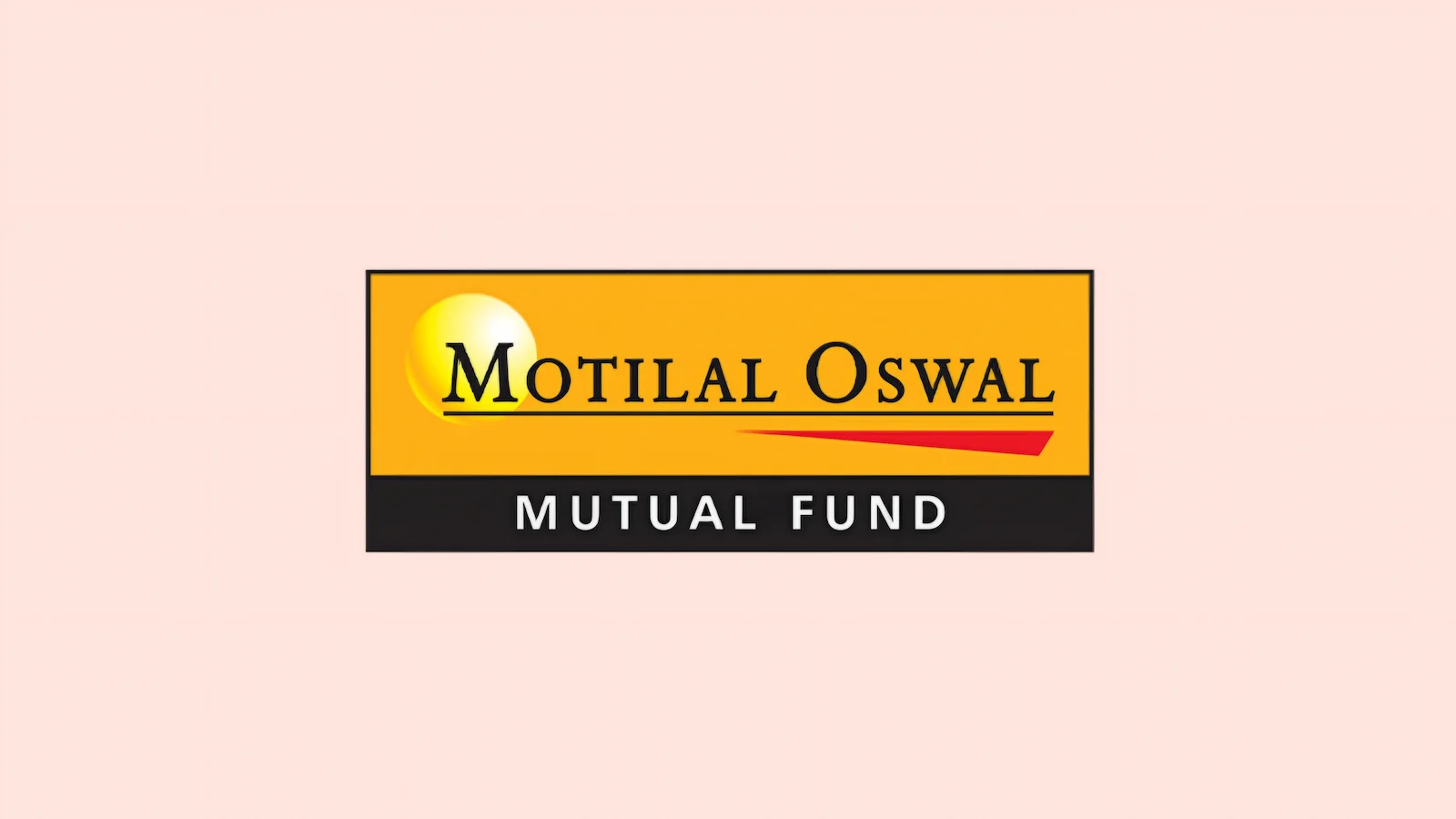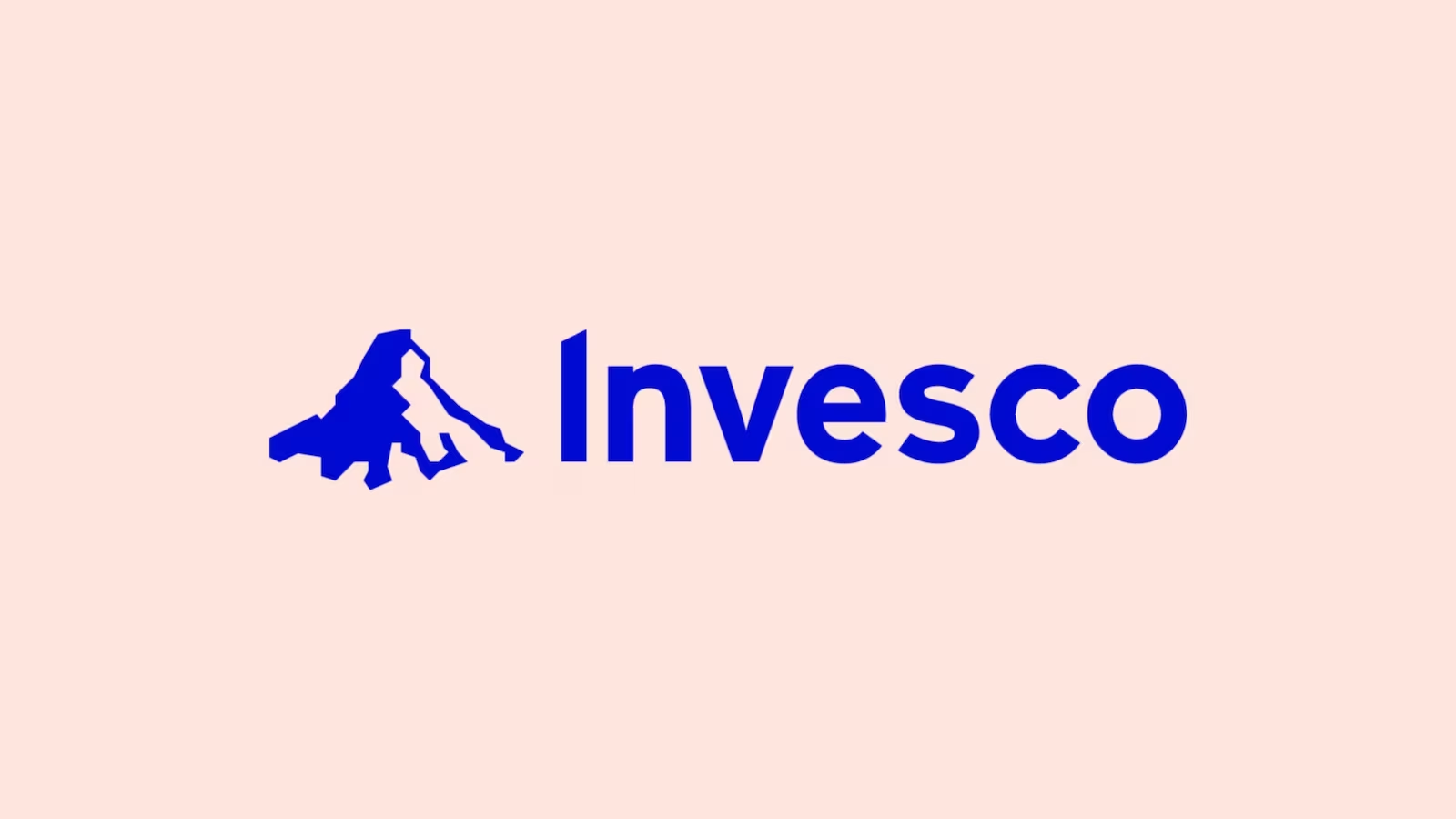
Mutual funds are a great way to grow money. While most investors prefer low risk funds, there is a type of investor who prefers high risk funds to achieve their financial goals as quickly as possible. The higher risk an investor is ready to take, the higher return he can expect. If you are such an investor looking for high growth potential funds with at least 5 to 10 years of investment horizon, here we listed top rated, high performing, high risky funds from the top AMCs.
There are thousands of funds available in the mutual fund market. But finding high return funds with high risk profile may be time consuming for an investor. That’s why here we have researched for days to find the best high risk funds. So, you can do further research on them before investing.
Table of Contents
What are High Risk Funds?

High risk funds are investment options that have a significant potential for high returns but also come with a considerable level of risk. These funds primarily invest in volatile assets such as equities, small-cap stocks, and sector-specific funds, which are more susceptible to market fluctuations. According to the SEBI, these funds are categorized based on their risk levels using a risk-o-meter, which helps investors gauge the likelihood of losing their investments compared to lower-risk options.
The main categories of high-risk mutual funds include equity mutual funds, particularly those focusing on mid-cap and small-cap stocks, sectoral funds, and thematic funds. Equity mutual funds are often considered the riskiest due to their exposure to the stock market’s inherent volatility.
For instance, mid-cap and small-cap funds target companies with smaller market capitalizations that can experience significant price swings but also offer substantial growth potential during bullish market phases.
Sectoral funds concentrate on specific industries, which can lead to higher returns if the sector performs well but also increases risk due to lack of diversification.

High risk funds can be an attractive option for investors looking to maximize their returns in a growing economy like India’s. However, they require careful consideration of individual risk tolerance and investment goals. The potential for significant gains comes with the responsibility of understanding market dynamics and managing risks effectively. Therefore, these funds may be best suited for long-term investors who can face volatility and are looking for aggressive growth strategies in their portfolios.
All the funds mentioned below come with very high risk as indicated by the Riskometer.

1. Quant Small Cap Fund

When it comes to risky investment, smallcap companies are one of those that has the higher growth potential with more volatility. Quant Small Cap Fund is one of the high risk funds that help investors double their money in less than 2 years between April 2023 to August 2024. However, past performance is not a guarantee of future returns.
Quant AMC’s investing strategy is more aggressive than other fund houses in the market. That’s why investors who want aggressive investing focusing on high risk high return, can look at the Quant Small Cap fund.
| Duration | CAGR | Absolute returns |
|---|---|---|
| 1 year | 39.59% | 40.10% |
| 2 years | 38.80% | 93.18% |
| 3 years | 28.90% | 114.49% |
| 5 years | 47.45% | 598.41% |
| 10 years | 21.62% | 609.23% |
| Since inception | 19.63% | 743.53% |
2. Nippon India Small Cap Fund

Nippon India is one of the popular AMC in India. Their small cap fund has also given higher returns over the past few years. Even though it is the largest small cap fund in terms of AUM (more than 60,000 crore). Investing such amounts across a few small cap companies may unexpectedly influence the small cap stocks. That’s why if we look it the holdings of Nippon India Small Cap Fund, this scheme has invested across 200+ different stocks, which definitely help reducing the risk, but it may also affect the return because of over diversification.
If you target for high return while minimising the risk, Nippon India Small Cap fund may be a better choice instead of other small cap funds.
| Duration | CAGR | Absolute returns |
|---|---|---|
| 1 year | 35.99% | 36.45% |
| 2 years | 37.26% | 88.89% |
| 3 years | 29.58% | 117.90% |
| 5 years | 36.66% | 377.40% |
| 10 years | 23.66% | 737.84% |
| Since inception | 27.18% | 1651.22% |
3. Motilal Oswal Nifty Microcap 250 Index Fund

Microcap stocks are more volatile than small cap, which means it also has the potential to beat the small cap funds. However, in certain market conditions (like bear market), these microcap funds may heavily impact.
Motilal Oswal Nifty Microcap 250 Index Fund is a very high risk fund that increases the risk on your investment, it means it can also increase the return on investment then any other funds. In market conditions like bull, a microcap fund may become that fund that appears at the top of your mutual fund portfolio when compared for the highest return fund in the portfolio. However, AMCs may stop inflows to their microcap fund scheme when the market is overvalued, which means new investors may not be able to start SIP and Lumpsum, while existing investors can redeem their units at any time.
| Duration | CAGR | Absolute returns |
|---|---|---|
| 1 year | 39.04% | 39.54% |
| Since inception | 54.16% | 83.29% |
4. Motilal Oswal Midcap Fund

Mid Cap funds are one of the preferred choices for long term investors who aim for achieving higher returns while reducing the extreme risk that comes with microcap and smallcap funds. Even though mid cap funds are risky, it is less volatile then small and micro cap. It means midcap funds may not beat smallcap funds in terms of return, but midcap funds have that capability of achieving higher return with less volatility. Motilal Oswal Midcap Fund is an example of a midcap fund that has beat the smallcap funds while showing strong support during market correction.
However, not all midcap funds have shown the same performance. As an investor with high risk tolerance, you should take care of some important things that will help achieve high returns in the long term. Here are some top priority considerations to achieve high returns in mutual fund:
- Consider Lumpsum on market correction while doing SIP.
- Review and Rebalance Portfolio Regularly. Review fund performance at least once a quarter.
- Don’t switch between schemes frequently to avoid exit load and maximize return.
- Consider index funds for taking benefit of a lower expense ratio.
- Understand the Fund Manager’s Expertise. Research the fund manager’s track record.
- Monitor Macroeconomic Trends. Understand how interest rates, inflation, and economic policies can affect returns and adjust your portfolio as per changing market dynamics.
- Stay Disciplined and Avoid Emotional Decisions. Don’t redeem or switch funds based on short-term market fluctuations. Focus on long-term growth.
| Duration | CAGR | Absolute returns |
|---|---|---|
| 1 year | 62.34% | 63.20% |
| 2 years | 45.98% | 113.75% |
| 3 years | 36.44% | 154.44% |
| 5 years | 33.80% | 329.53% |
| 10 years | 22.01% | 632.52% |
| Since inception | 26.15% | 1119.32% |
5. Quant Mid Cap Fund

Another high risk fund is Quant Mid Cap Fund. When it comes to risky investment, Quant’s funds come at the top. Their most of the equity funds are highly volatile and have shown excellent return over the last few years.
When it comes to choose between Motilal Oswal Midcap Fund and Quant Mid Cap Fund for high risk high return, the Quant Mid Cap Fund may be suitable for more aggressive investors. On the other hand, the Motilal Oswal Midcap Fund is slightly less volatile than Quant Mid Cap Fund, but both mid cap funds have shown great performance that a high risk profile investor wants.
| Duration | CAGR | Absolute returns |
|---|---|---|
| 1 year | 30.52% | 30.90% |
| 2 years | 28.42% | 65.25% |
| 3 years | 25.53% | 98.05% |
| 5 years | 33.84% | 330.07% |
| 10 years | 19.50% | 494.84% |
| Since inception | 19.17% | 705.71% |
6. Invesco India Infrastructure Fund

Infrastructure is a rapidly growing sector in countries like India. Invesco India Infrastructure Fund is a top performing sectoral/thematic scheme in the infrastructure fund category. Investing in India’s infrastructure means the investor is investing in the growth story of India. Furthermore, as the country is continuously growing and the government is also supporting the infrastructure sector, all these make an infrastructure fund high return potential scheme for the future.
| Duration | CAGR | Absolute returns |
|---|---|---|
| 1 year | 52.00% | 52.70% |
| 2 years | 42.23% | 102.88% |
| 3 years | 29.90% | 119.51% |
| 5 years | 31.93% | 300.31% |
| 10 years | 18.97% | 468.85% |
| Since inception | 21.33% | 900.26% |
7. Aditya Birla Sun Life Transportation and Logistics Fund

Another growing sector is the automotive sector, specifically the Electric Vehicle companies are rising more. According to the IBEF, India is on track to become the largest EV market by 2030, with a rise in investment over the next 8-10 years.
There are different mutual fund schemes available that invest most of their amount in EV related companies. One of those is Aditya Birla Sun Life Transportation and Logistics Fund. Mahindra, TATA Motors, and Maruti Suzuki dominate the list of companies whose stocks appear in most EV mutual funds.
| Duration | CAGR | Absolute returns |
|---|---|---|
| 1 year | 40.40% | 40.92% |
| Since inception | 40.01% | 40.92% |
8. Bandhan Nifty Alpha 50 Index Fund

Alpha funds specifically include stocks with high alphas instead of depending on the fundamentals. Bandhan Nifty Alpha 50 Index Fund is an index fund that replicates the Nifty Alpha 50 Index. This index tracks the performance of 50 stocks with high alphas over the past year. Also, the index has shown more than 20% CAGR returns since inception. If you are a long-term investor with high risk tolerance who likes volatility and expects higher return, then Bandhan Nifty Alpha 50 Index Fund is a best strategy based index fund. As an index fund, it charges less expense ratio than actively managed funds.
| Duration | CAGR |
|---|---|
| 1 year | 60.53% |
| 5 years | 35.35% |
| Since inception | 22.43 |
9. Nippon India Nifty 500 Momentum 50 Index Fund

Momentum funds include stocks that show the highest momentum scores. In terms of Nifty 500 Momentum 50 index, it tracks the performance of 50 stocks which are selected based on normalized momentum score from the Nifty 500 index. The momentum score for each company is determined based on its 6-month and 12-month price return, adjusted for volatility. Nippon India Nifty 500 Momentum 50 Index Fund is a passively managed fund to invest through the momentum strategy.
There are many strategy indices available as mentioned on the NSE. But these two Nifty 500 Momentum 50 and Nifty Alpha 50 are the most volatile available index funds, suitable for investors looking for high risk funds to invest in.
| Duration | CAGR |
|---|---|
| 1 year | 59.79% |
| 5 years | 31.76% |
| Since inception | 24.32% |
10. HDFC Defence Fund

Defence is another rising sector as the government of India is focusing on the sector. Defence funds invest in the defense, aerospace, and related industries. It includes manufacturers of weapons, defense equipment, aerospace technology, cybersecurity, and other defense-related services. As an investor with high risk tolerance, sectoral/thematic funds may provide higher return. But the investor himself should be aware of sector rotation, as these funds perform well at times and not at others.
| Duration | CAGR | Absolute returns |
|---|---|---|
| 1 year | 65.08% | 65.99% |
| Since inception | 70.31% | 121.12% |
Which is the Best High Risk Fund?
There is no single answer. Here are the best high risk fund categorised as actively managed, sectoral/thematic, and strategy based.
Actively managed Best High Risk Fund: Quant Small Cap Fund.
Sectoral/Thematic Best High Risk Fund: Invesco India Infrastructure Fund.
Strategy based Best High Risk Fund: Bandhan Nifty Alpha 50 Index Fund.
Pros and Cons of High Risk Funds
Pros
- Higher Returns Potential: High risk funds, such as equity funds, small-cap, and mid-cap funds, have historically delivered higher returns compared to low-risk options like debt or fixed deposits.
- Aggressive Growth Opportunities: These funds target sectors or companies with rapid growth potential, allowing investors to capitalize on market trends and economic upswings.
- Wealth Creation: These funds are ideal for long-term wealth creation, leveraging compounding to maximize gains. For instance, systematic investment in equity funds has been effective in beating inflation over decades.
- Liquidity: Most high-risk mutual funds allow for easy entry and exit (open-ended), which provides investors with the flexibility to redeem their investments when needed.
Cons
- Market Volatility: High risk funds are heavily influenced by market fluctuations, which can lead to substantial losses during market downturns. For example, during the COVID-19 crash in 2020, Nifty 50 fell by 30% in a month, severely impacting equity funds.
- Limited Diversification: Some high risk funds may focus heavily on a few sectors or stocks, which increases exposure to specific market risks and reducing overall portfolio stability.
- High Expense Ratio: The costs associated with actively managed high risk funds can be higher than those of low-risk options, potentially eating into returns over time.
- Requires Knowledge and Patience: These funds are not suitable for risk-averse investors or those without sufficient market understanding, as emotional decisions during downturns can lead to losses.
Who May Consider High Risk Funds and Who May Avoid?
High risk funds are suitable for those investors who’s investment horizon is more than 5 years. Long term investors often benefit from investing in risky funds. If you are investing for a short term, you may avoid adding high risk funds in your portfolio. Short term means below 5 years of investment horizon. Also, if you are not comfortable with market volatility, where funds return often rise or fall, you may avoid these funds. Investors who have a clear goal of long term investing, don’t affected by market volatility, and aim for higher returns, may consider high risk funds.
FAQs
Do we lose money in high risk mutual funds?
Yes, if you redeem your mutual funds units under the condition when your mutual fund scheme is showing negative returns, then you may incur a loss. However, if you invest for long term (at least 5-10 years) by choosing valuable mutual funds, there are less chance of losing money. In most cases, short-term (below 5 years) investors, who take high risks, may lose money. But if you wait for the long term and allow the market to reach new highs, then there is minimal chance of losing money.
Can mutual funds give 20% returns?
Yes, mutual funds can give 20% returns. But not all funds have the capability of achieving such returns. Some of the High Risk Equity mutual funds historically provided 15% to 20% annual returns.
Is it better to invest in high risk or low risk?
Both risks have their own advantages and disadvantages. If you are a high risk tolerance investor, who wants to create long-term wealth, high risk investments may be better. If you don’t want to take high risk, and want to beat the inflation when growing money, then low risk investments may be better. Low risk investments are not for creating wealth, while high risk investments are excellent choices for wealth creation. So, it is better to invest in high risk for wealth creation, and it is better to invest in low risk to beat inflation and slowly grow your money.
High risk funds are risky investments. Do your own research before investing in any mutual fund. All the schemes mentioned in this article are the best funds with high return potential, but not investment advice. We hope you have found the information helpful and it helps finding the best high risk funds.
Like this article? Get our weekly newsletter
Free newsletter with the best mutual fund stories every week!
Leave a Reply
You must be logged in to post a comment.